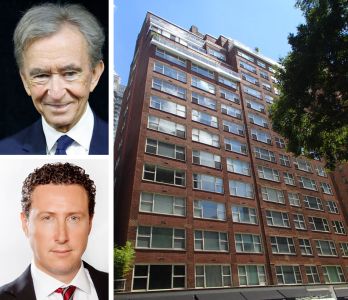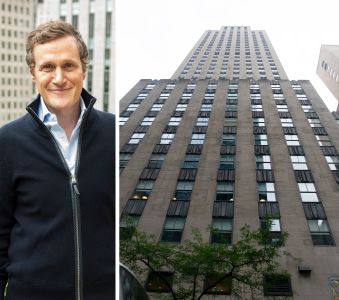CO Forum Explores How Real Estate Is Preparing for a Greener, Cleaner Future
By Chava Gourarie September 24, 2020 11:30 am
reprints
On Saturday, the Metronome clock in Manhattan’s Union Square began counting down to a critical deadline: the time left before climate change will do irreversible damage to the Earth. The deadline was seven years, 103 days, 15 hours, 40 minutes and seven seconds away when that countdown began, according to the two artists behind the project.
With that deadline looming, Commercial Observer convened its inaugural sustainability forum on Tuesday, bringing together owners, lenders, policymakers, engineers and designers to discuss how the real estate industry can build a greener, healthier, more sustainable future.
As several panelists pointed out, the built environment is a tremendous contributor to carbon emissions, both because of the amount of energy that buildings consume and because of the materials and construction—called embodied carbon—required to build them.
“Embodied carbon, between now and 2050, will be responsible for half of all carbon emissions globally,” said Wes Sullens, director of the LEED department at the U.S. Green Building Council.
On the energy side, the “real estate industry consumes 40 percent of energy globally,” said Brandon Tinianov, an executive at View, which makes smart glass designed to make buildings more energy efficient.
The event began with keynote addresses from two New York City developers who have been pioneers in building more sustainable properties in the city: Douglas Durst, chairman of the Durst Organization, and Tony Malkin, chairman and CEO of Empire State Realty Trust.
Both highlighted the connection between wellness and sustainability, since many of the innovations around sustainability—including a focus on energy efficiency, cleaner air, more natural lighting and green space—translated into healthier spaces.
“Sustainability must be human-centric,” Durst said. “The health, wellness and productivity of the people who live and work in our space are as important as energy reduction in conservation of natural resources.”
Rao Mulpuri, CEO of View, who introduced Durst, pointed out that the Durst Organization built Four Times Square, the first green skyscraper, back in the late 1990s, and has continued to innovate in the decades since.
Malkin agreed that sustainability and wellness go hand in hand, pointing out that ESRT recently became the first REIT in the United States to have its entire commercial portfolio to receive the WELL Health Safety rating.
Following the keynote addresses, there were four panels covering various issues in sustainability, including the regulatory landscape, new financing models, innovations in design, and how the coronavirus pandemic is accelerating some of these changes. New York City’s Local Law 97, which is one of the country’s most aggressive regulatory frameworks targeting the energy efficiency of buildings, was high on everyone’s agenda.
Malkin, who is on the advisory board to implement the law, said parts of it were problematic but that ESRT agreed with it directionally. “It’s an electrification bill, not an energy efficiency bill,” he said.
Either way, the law will be a wakeup call for owners, who might have to significantly change their buildings or face consequences beginning in 2024, Malkin said.
“It’s not LEED,” he noted. “So many people have followed LEED down the path of collecting points for plant walls, water features in their lobbies, bike racks, showers — that’s great, but that will not reduce your fines under Local Law 97.”
The first panel, “Creating Change from the Ground Up: CRE’s Climate Commitments,” was moderated by Tegan Keele, who oversees the blockchain practice at KPMG. Panelists included Dean Shapiro, a senior vice president at Oxford Properties; Erik Horvat, managing director at Olayan America; Sonu Panda, CEO of Prescriptive Data; and Zachary Steinberg, vice president of policy at the Real Estate Board of New York.
Panda noted that one important takeaway from the coronavirus was that even when buildings were almost entirely vacant energy consumption was only down 30 percent, highlighting how inefficient buildings can be and how much the right data can help in cutting some of that excess energy usage.
The second panel, “Rethinking Real Estate: A Look at What Decarbonization & Wellness Mean in the Age of COVID” focused on the connection between wellness and sustainability. It was moderated by Adin Meir, president of Codegreen, and panelists included Jessica Cooper, the chief commercial officer of the International WELL Building Institute; Matthew Holst, managing director of architecture and construction at Fisher Brothers; Sydney Mainster, vice president of sustainability at Durst; and View’s Tinianov.
“For the first time ever, people walking down the street realize that their buildings, and the environments where they spend 90 percent of their time, affect their health,” Tinianov said. “It starts the dialogue that our buildings can help us.”
In the third panel, “Investing in Sustainability: Green Financing & The Future of Lending Options,” CO’s Cathy Cunningham talked to two innovators who are offering new ways for developers and owners to access financing that supports sustainable development. Michael Magner, a managing director at Natixis, discussed how the French bank is using a green risk-weighting factor and offers a lower spread on loans for properties that are better prepared for the future. Green lending is a “huge market” and an “untapped market,” Magner said. Alexandra Cooley, co-founder and COO at Greenworks Lending, discussed C-PACE financing, a program that offers long-term benefits for buildings that incorporate sustainable aspects.
Finally, the fourth panel, “Clean Construction: Net-Zero Energy & the LEEDers of Green Building,” focused on building materials and design, in addition to energy efficiency. It was moderated by CO’s Tom Acitelli, and panelists included John J. Gilbert III, executive vice president at Rudin Management; Devon Prioleau, director at Ferzan Company; Jeff Rios, partner at AKF Group; Mallory Taub, an associate at Gensler; and the U.S. Green Buildings Council’s Sullens.
“People say that data is the new oil, but it’s crude oil,” Gilbert said. “Unless property owners get their arms around software that can ultimately refine that data and refine that oil and make it useful, then we’re never going to get to where we need to get to in terms of sustainability and a greener environment.”


